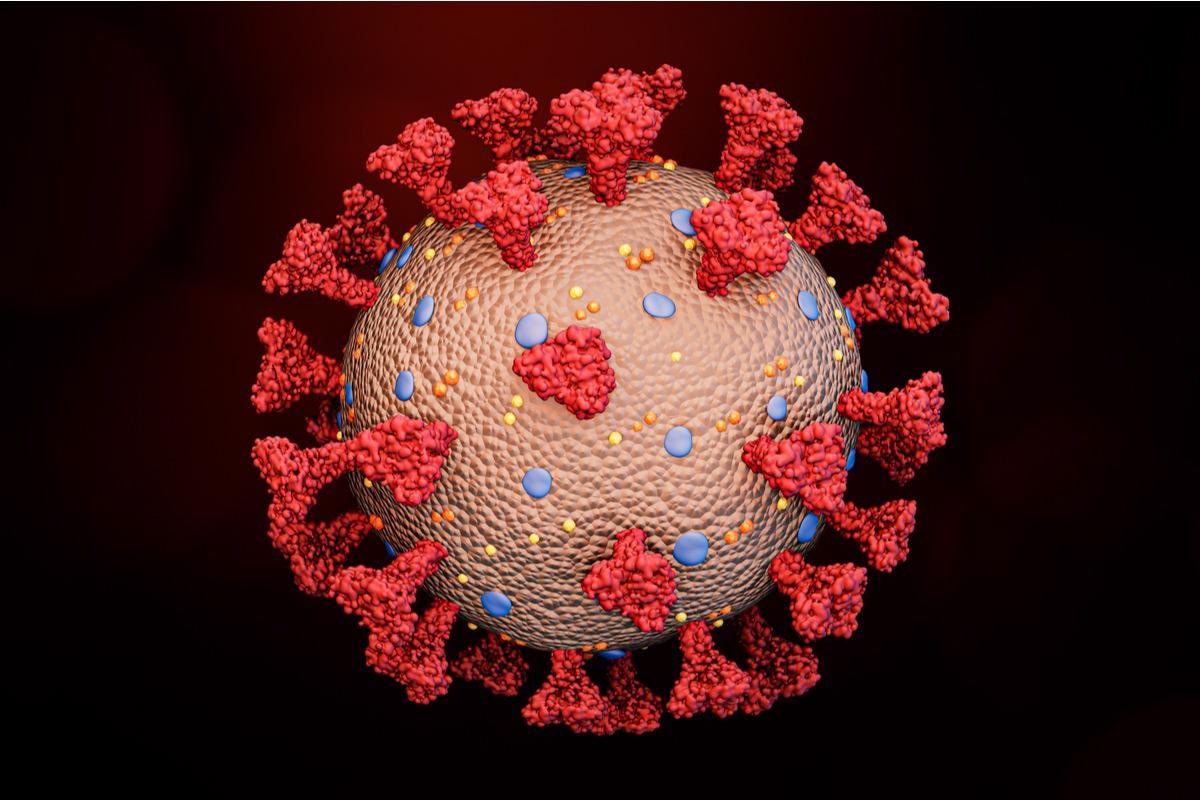In a recent study published in Nature Communications, a team of researchers from the United Kingdom (UK) assessed the structure and receptor-binding features of severe acute respiratory syndrome coronavirus 2 (SARS-CoV-2) Alpha (B.1.1.7) and Beta (B.1.351) variant spikes proteins to comprehensively understand the evolution of SARS-CoV-2 in the human host.
 Study: Evolution of the SARS-CoV-2 spike protein in the human host. Image Credit: MattLphotography/Shutterstock
Study: Evolution of the SARS-CoV-2 spike protein in the human host. Image Credit: MattLphotography/Shutterstock
SARS-CoV-2 spike glycoproteins bind the host angiotensin-converting enzyme 2 (ACE2) receptors and mediate viral membrane fusion to facilitate entry into host cells. Several studies have demonstrated D614G substitution at the monomer-monomer interface of the SARS-CoV-2 spike trimer that increased the probability of spike proteins to adopt the open conformation to competently bind the ACE2 receptor.
The present study confirmed and extended this observation and provided insights into the SARS-CoV-2 variant spike structures with the bound receptors. The researchers directly compared the pre-fusion spikes of SARS-CoV-2 Alpha and Beta variants with the original Wuhan strain and the D614G-only variant.
Study design
In the current study, SARS-CoV-2 spike constructs were obtained through Genscript from the constructs of SARS-CoV-2 Wuhan spike ectodomain (1-1208 residues). The team stabilized the variant spikes using the furin-cleavage site ([PH]RRAR).
Various SARS-CoV-2 variants spikes obtained were expressed in Expi293F cells and purified for the D614G spike. Biolayer interferometry was performed to measure the affinity of spike variants with human ACE2 ectodomain. ACE2-spike complexes were prepared using Cryo-electron microscopy (Cryo-EM). Micrograph data of Cryo-EM were collected by electronic processing unit (EPU) software on Titan krios microscopes. Data collected were processed by MotionCor2 embedded in RELION and refined in cryoSPARC.
Findings
The researchers observed the SARS-CoV-2 Alpha spike protein complexed with ACE2 as full trimers with intact furin site. However, a considerable portion of other spikes/ACE2 complexes were dissociated into monomers. The trimeric Alpha spike proteins were more stable in the ACE2-receptor complex compared to the Wuhan or Beta spikes. The Alpha spike was cleaved fully into the S1 and S2 subunits compared to the Wuhan spike. The P681H substitution in the Alpha spike generated a simple basic furin cleavage site (HRRAR) which was also observed in the Omicron (B.1.1.529) variant spike.
The trimeric state of the Alpha spike bound to the receptor may be stabilized by D1118H and A570D substitutions on the interfaces of the inter-monomer. Surface biolayer interferometry revealed increased ACE2 binding to spike proteins of Alpha and Beta variants as compared to the Wuhan strain. From the substitution of N501Y in the RBD, a six-fold and two-fold increase in binding strength was noted for the Alpha and Beta spikes as compared to Wuhan spikes. The Alpha spike has retained the identical salt bridges as in the Wuhan spike between Lys-417 and Asp-30 residue at RBD and ACE2, respectively. However, the Beta spike does not have an equivalent salt bridge as its RBD has acquired extra substitution of asparagine at 417 residues.
For understanding the receptor binding evolution, the team expressed the Alpha spike with aspartic acid residue at 614 positions rather than the glycine residue. They noted that D614G substitution that occurred initially in the evolution of the SARS-CoV-2 Wuhan variant, continued to be present in Alpha and Beta variants. Alpha spikes with engineered G614D showed a similar binding affinity as in Wuhan spikes. The researchers also showed that Y453F substitution in the RBD of mink spike increased affinity for ACE2 only if 614 residue was glycine but not aspartic acid.
CryoEM studies of the Beta spike structure showed that all trimers adopted an open conformation with an open form of the Beta variant more stable compared to the open form of the Wuhan variant. The Beta spike opening was induced by K417 substitution on the G614 background which was also observed in the spike of the Omicron variant.
The researchers observed that the fully cleaved Alpha spike was more stable in receptor-bound trimer form compared to the Wuhan and Beta spikes. Moreover, Kappa and Delta spikes showed P681R substitution and Omicron showed P681H substitution which increased stability of these spikes in receptor-bound form and hence increased transmissibility.
The binding data of the variants and engineered constructs showed that for the tighter receptor binding changes in the RBD, D614G substitution was a prerequisite which increased the RBD-binding sites and enhanced SARS-CoV-2 binding to host cells.
Conclusion
The findings of the study demonstrated different ways of SARS-CoV-2 evolution to achieve higher transmission in humans. They also provided insights into the SARS-CoV-2 spike glycoproteins structures of Alpha and Beta variants.
The study revealed various characteristics acquired by the SARS-CoV-2 variant spikes during evolution to optimize interaction with the host. These include the promotion of the open forms of the spike proteins, increased stability in the pre-fusion-conformation of the trimeric ACE2 receptor-bound spike, and tighter receptor binding that explained the increased infectivity of newly emerging SARS-CoV-2 variants.